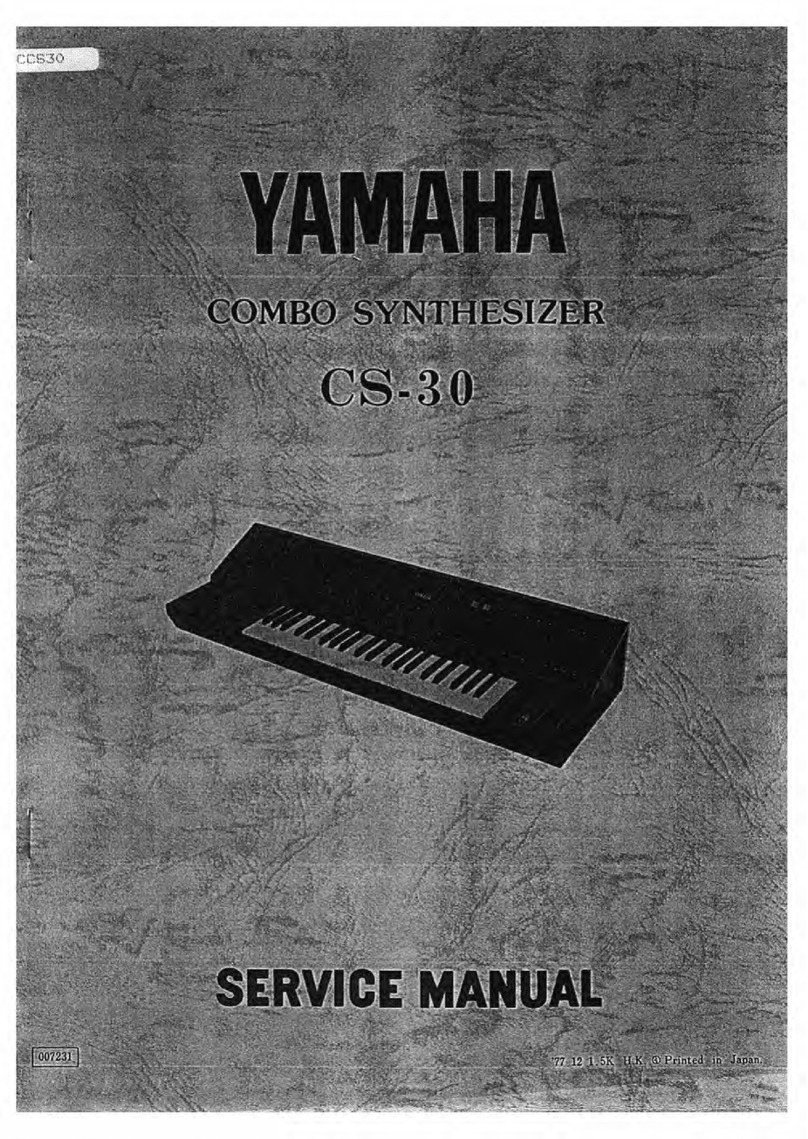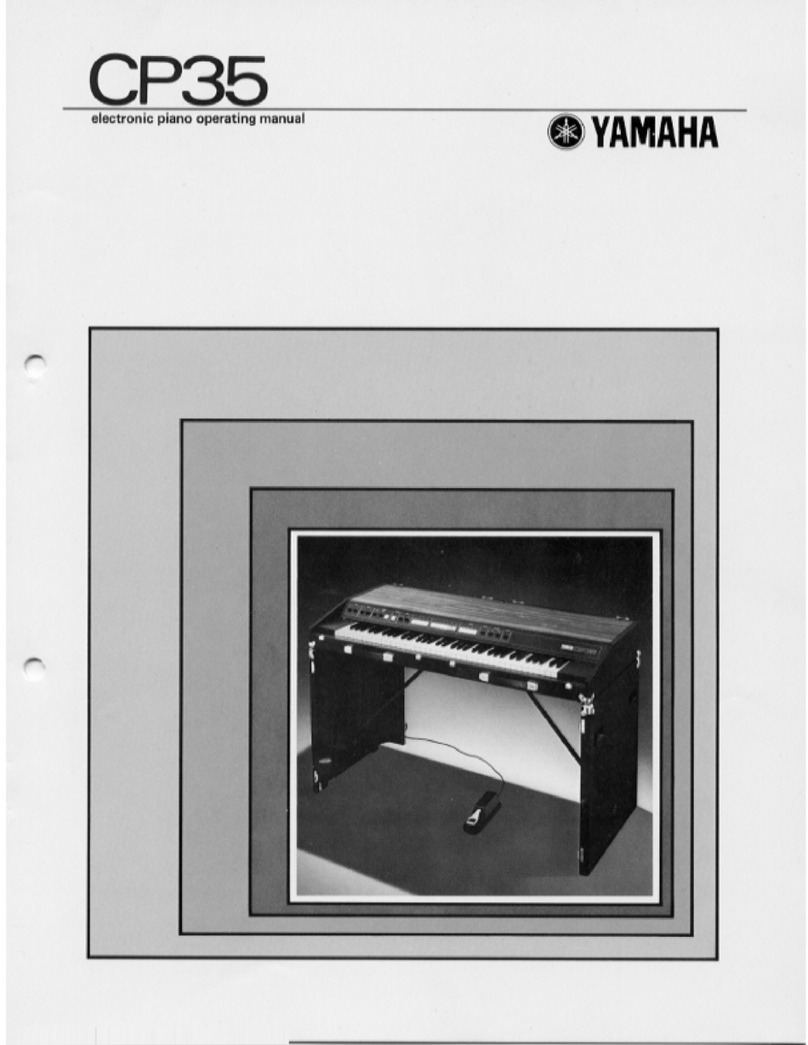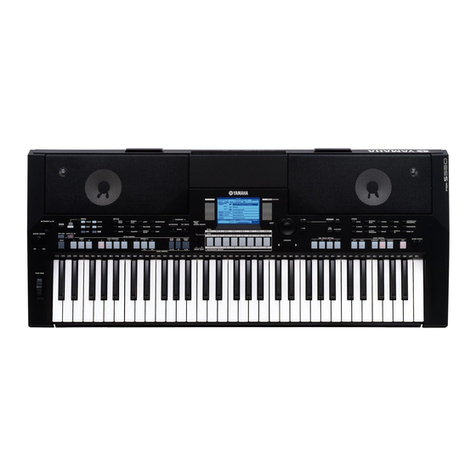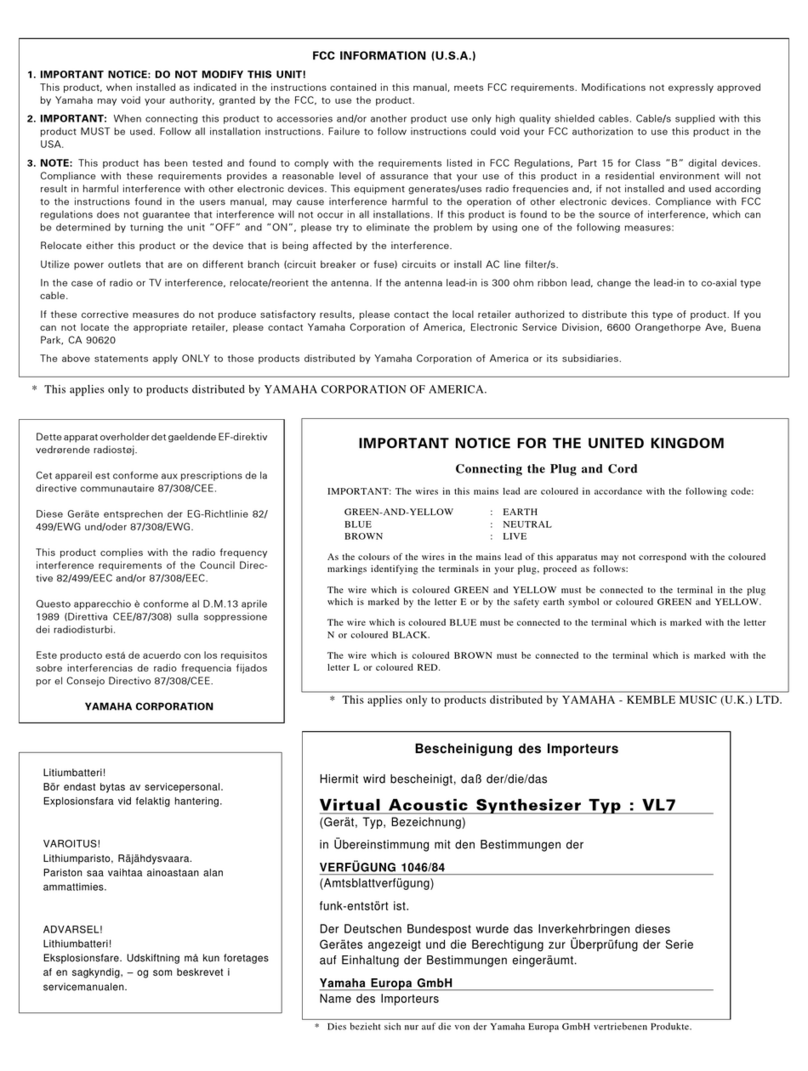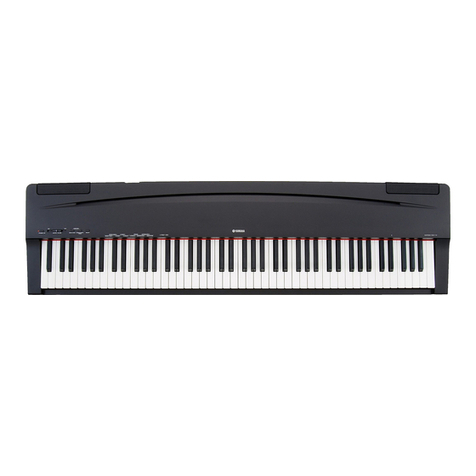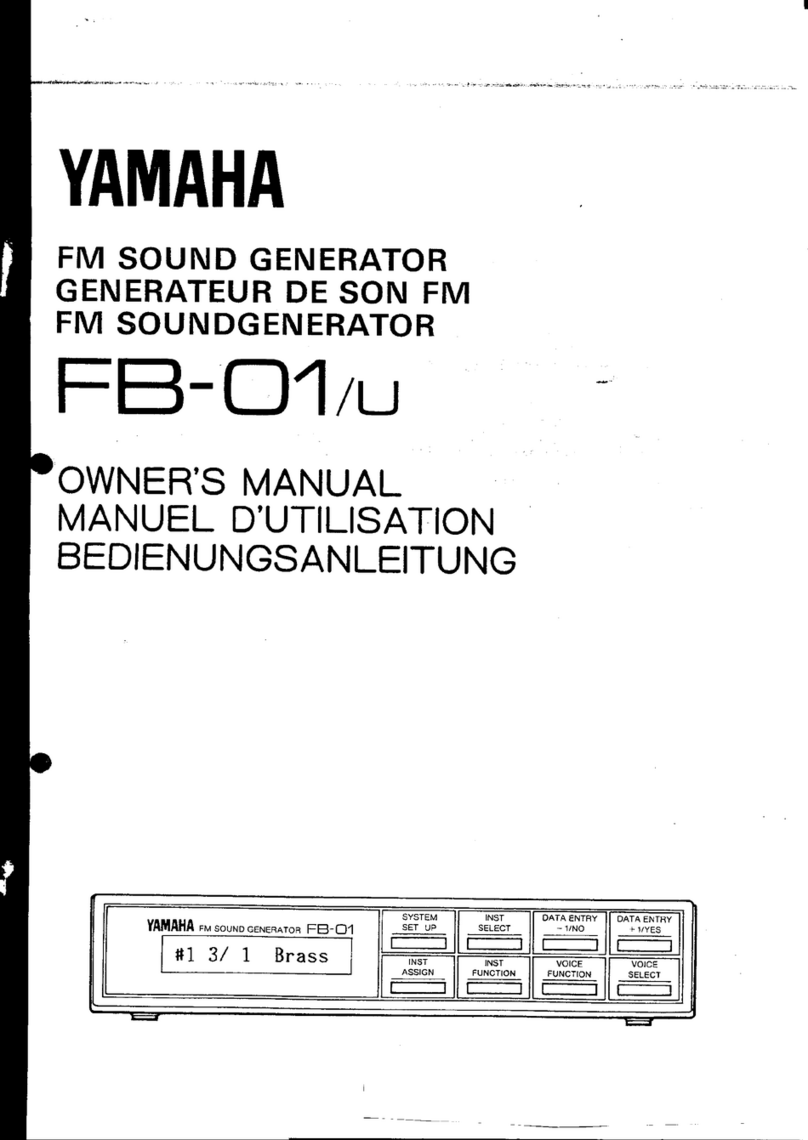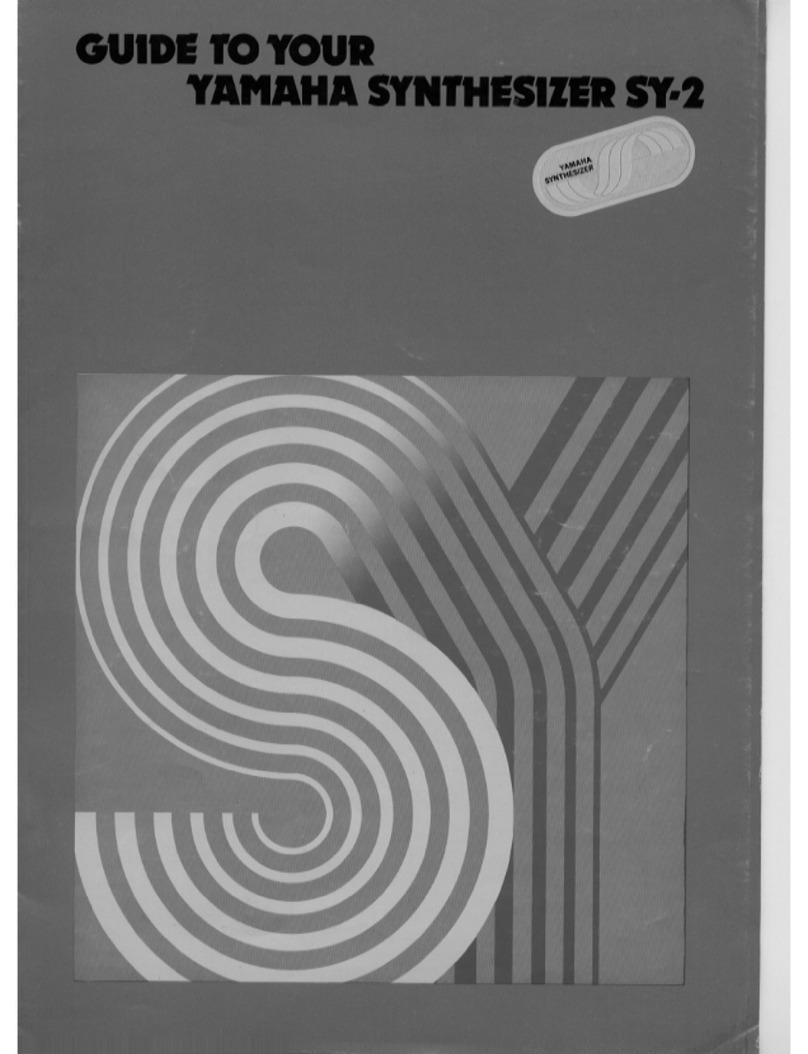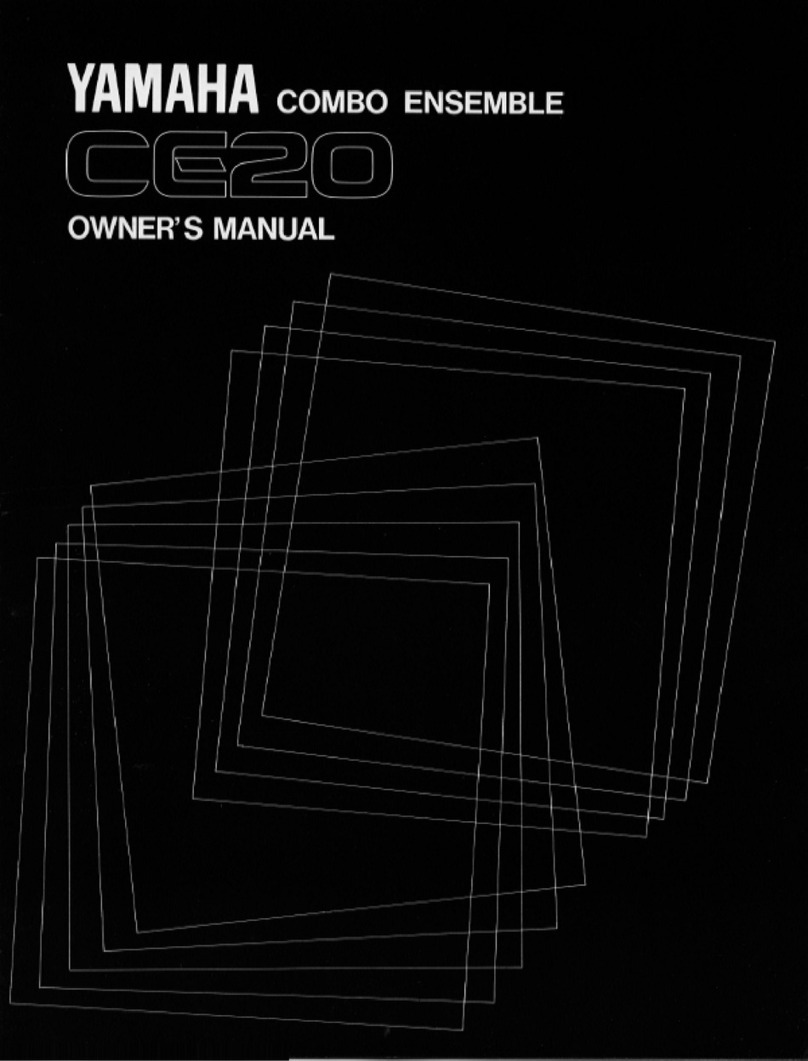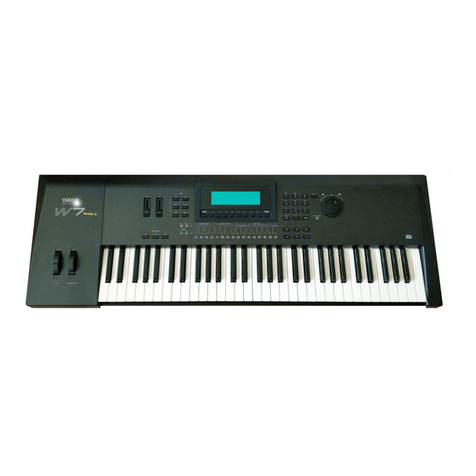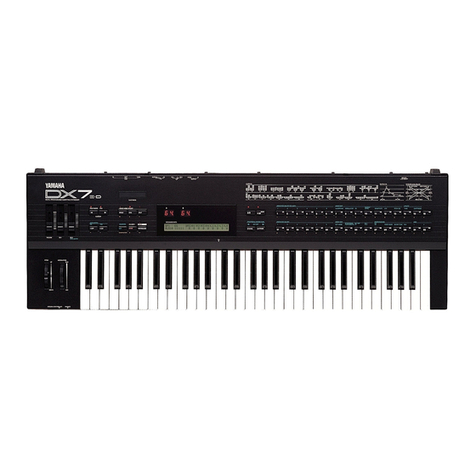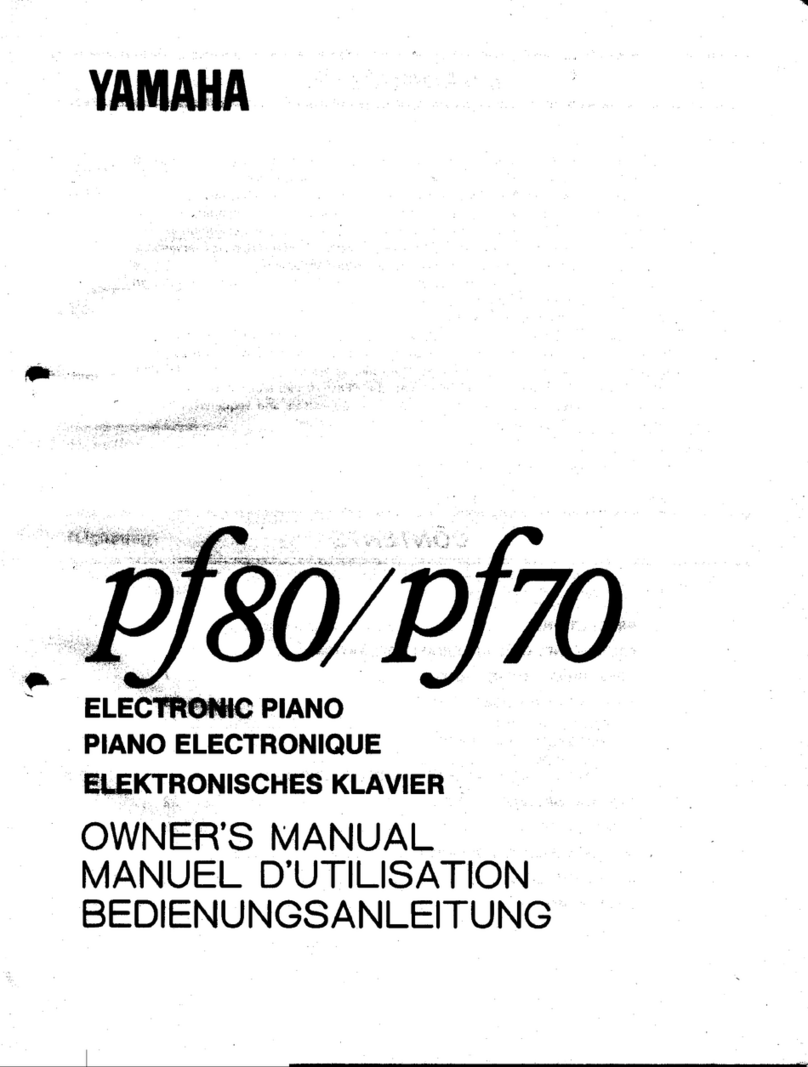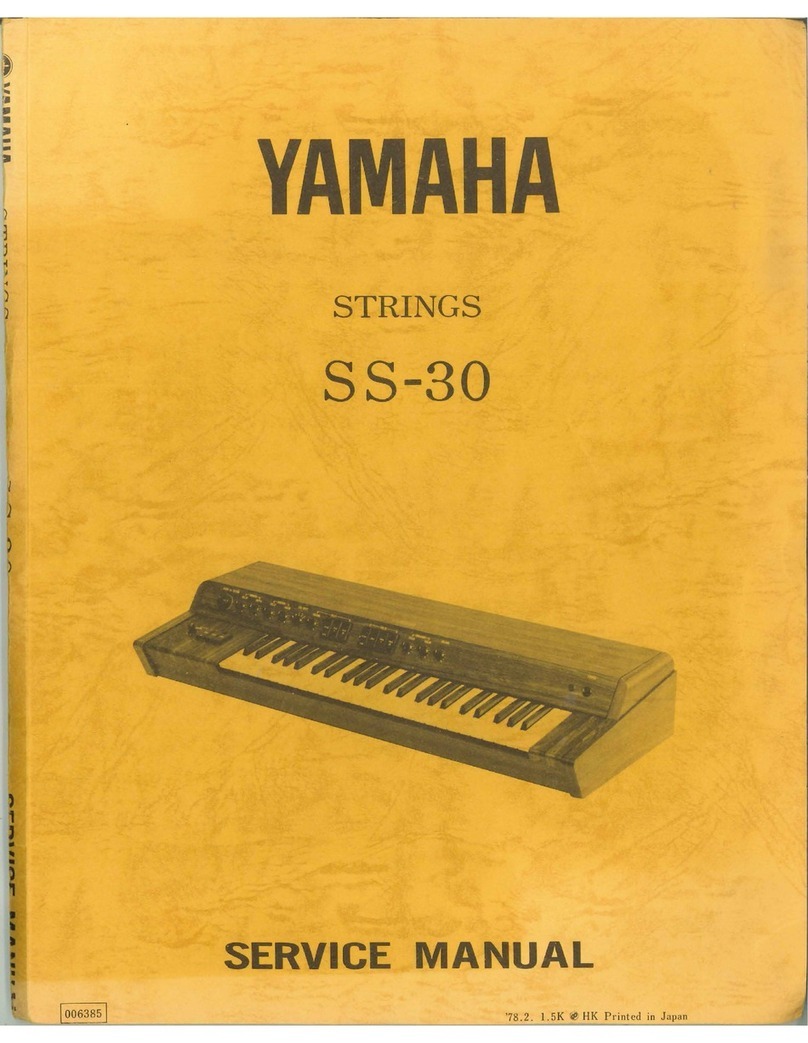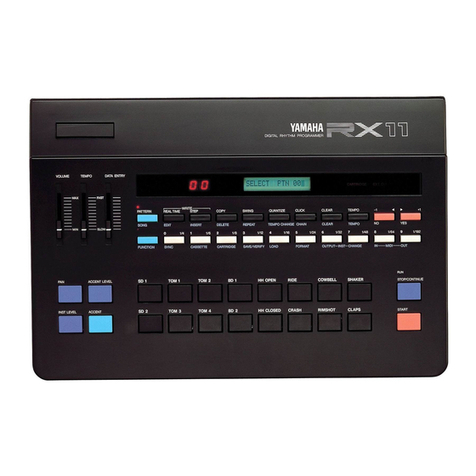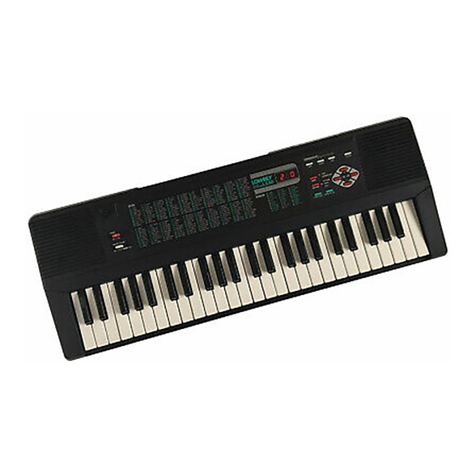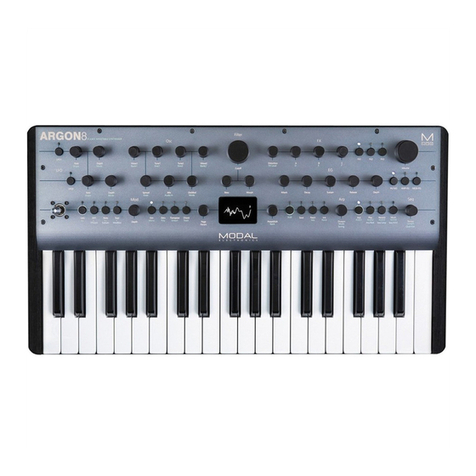
IMPORTANT
SAFETY AND INSTALLATION INSTRUCTIONS
INFORMATION RELATING TO POSSIBLE PERSONAL INJURY, ELECTRIC SHOCK, AND
FIRE HAZARD POSSIBILITIES HAS BEEN INCLUDED IN THIS LIST.
WARNING-When using electronic products, basic precau-
tions should always be followed, including the following:
1. Read all Safety and Installation Instructions, Supple-
mental Marking and Special Message Section data, and
any applicable assembly instructions BEFORE using
this product.
2. Check unit weight specifications BEFORE you attempt
to move this product.
3. Main power supply verification. Yamaha Digital Musical
Instrument products are manufactured specifically for
use with the main supply voltage used in the area where
they are to be sold. The main supply voltage required by
these products is printed on the name plate. If any
doubt exists please contact the nearest Yamaha Digital
Musical Instrument retailer.
4. Some Yamaha Digital Musical Instrument products uti-
lize external power supplies or adapters. Do NOT con-
nect products of this type to any power supply or
adapter other than the type described in the owners
manual or as marked on the unit.
5. This product may be equipped with aplug having three
prongs or apolarized line plug (one blade wider than
the other). If you are unable to insert the plug into the
outlet, contact an electrician to have the obsolete outlet
replaced. Do NOT defeat the safety purpose of the plug.
Yamaha products not having three prong or polarized
line plugs incorporate construction methods and de-
signs that do not require line plug polarization.
6. WARNING-Do NOT place objects on the power cord or
place the unit in aposition where any one could walk
on, trip over, or roll anything over cords of any kind. An
improper installation of this type can create the possibil-
ity of afire hazard and /or personal injury.
7. Environment: Your Yamaha Digital Musical Instru-
ment should be installed away from heat sources such
as heat registers and /or other products that produce
heat.
8. Ventilation: This product should be installed or posi-
tioned in away that its placement or location does not
interfere with proper ventilation.
9. Yamaha Digital Musical Instrument products are fre-
quently incorporated into "Systems" which are assem-
bled on carts, stands, or in racks. Utilize only those carts,
stands, or racks that have been disigned for this purpose
and observe all safety precautions supplied with the
products. Pay special attention to cautions that relate to
proper assembly, heavier units being mounted at the
lower levels, load limits, moving instructions, maximum
usable height and ventilation.
10. Yamaha Digital Musical Instrument products, either
alone or in combination with amplification, head-
phones, or speakers, may be capable of producing
sound levels that could cause permanent hearing loss.
Do NOT operate at high volume levels or at alevel that
is uncomfortable. If you experience any discomfort,
ringing in the ears, or suspect any hearing loss, you
should consult an audiologist.
11. Do NOT use this product near water or in wet environ-
ments. For example, near aswimming pool, spa, in the
rain, or in awet basement.
12. Care should be taken so that objects do not fall, and
liquids are not spilled into the enclosure.
13. Yamaha Digital Musical Instrument products should be
services by aqualified service person when:
a. The power supply /power adapter cord or plug has
been damaged; or
b. Objects have fallen, or liquid has been spilled into the
product; or
c. The unit has been exposed to rain; or
d. The product does not operate, exhibits amarked
change in performance; or
e. The product has been dropped, or the enclosure of
the product has been damaged.
14. When not in use, always turn your Yamaha Digital Mu-
sical Instrument equipment "OFF". The power supply
cord should be unplugged from the outlet when the
equipment is to be left unused for along period of time.
NOTE: In this case, some units may lose some user
programmed data. Factory programmed memories will
not be affected.
15. Electromagnetic Interference (RFl). Yamaha Digital
Musical Instruments utilize digital (high frequency
pulse) technology that may adversely affect Radio/TV
reception. Please read FCC Information (next page) for
additional information.
16. Do NOT attempt to service this product beyond that
described in the user maintenance section of the owners
manual. All other servicing should be referred to quali-
fied service personnel.
PLEASE KEEP THIS MANUAL
FOR FUTURE REFERENCE!
